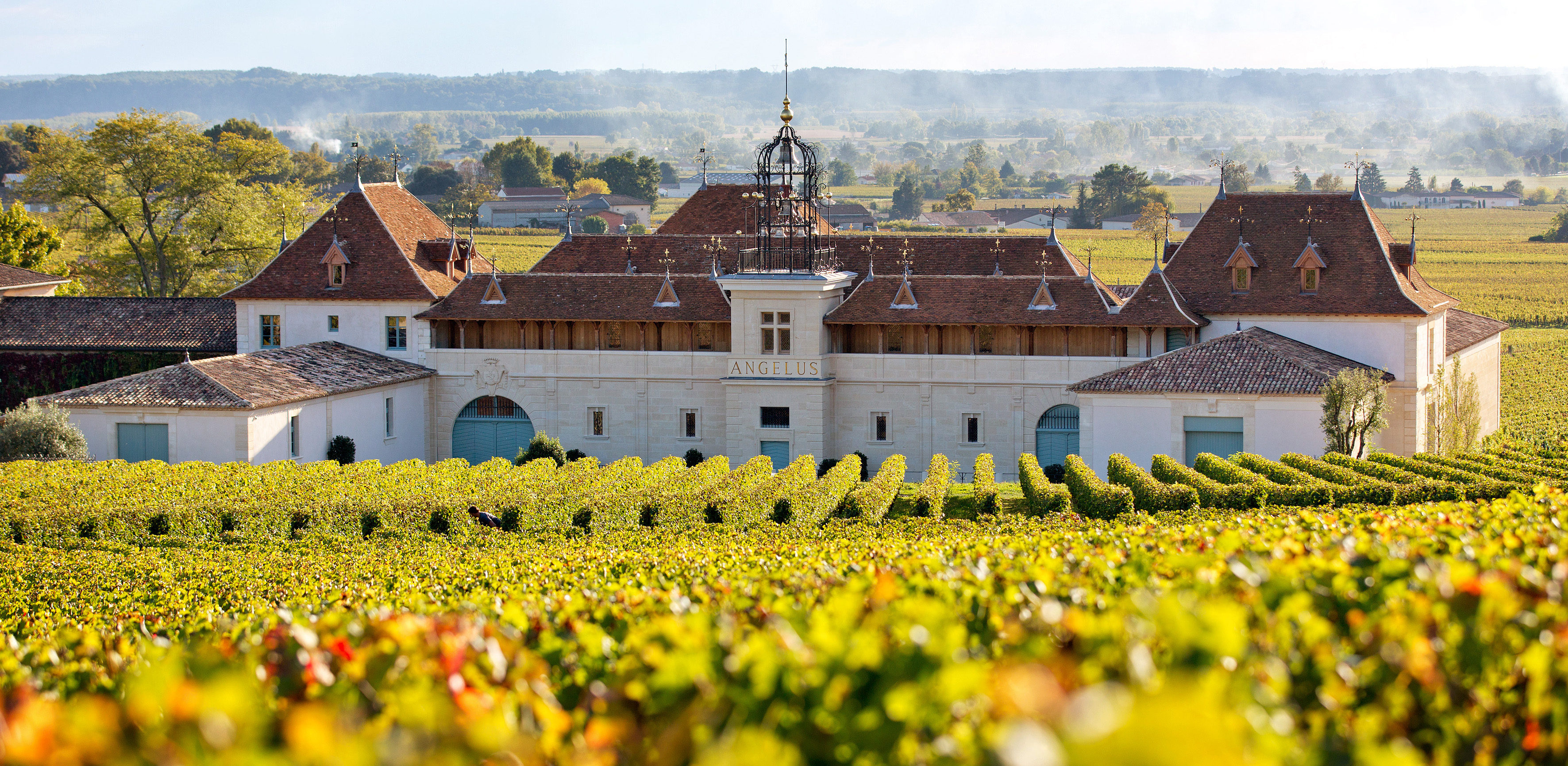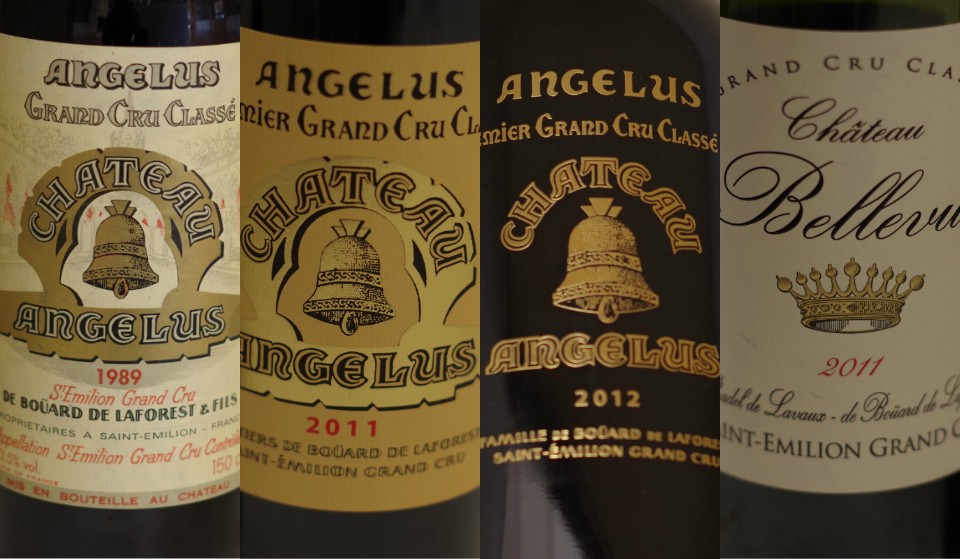 Crédit Photo: Château Angélus
Crédit Photo: Château Angélus
Only a small kilometer away from the historic, charming village of Saint-Émilion stands Château Angélus. The vineyard of Château Angélus is situated in a natural amphitheatre overlooked by the three Saint-Émilion churches which you even cross on your way there. The name of this famous estate comes from the angelus, a Catholic prayer that is associated with the ringing of bells three times a day. Historically, the emphasized sound of the bells was resonating throughout the vineyard and was marking the time of the day for the workers. This is why the golden bell became the symbol of the estate and a gigantic carillon was installed on the main building.
À seulement un petit kilomètre du village historique et charmant de Saint-Émilion, se trouve Château Angélus. Le vignoble du Château Angélus est situé dans un amphithéâtre naturel entouré par les trois églises de Saint-Émilion que vous rencontrerez même sur la route. Le nom de ce domaine célèbre provient de l’angelus, une prière catholique associée à la résonnance des cloches des églises trois fois par jour. Historiquement, le son accentué des cloches résonnait dans tout le vignoble et marquait le temps de la journée pour les travailleurs. C’est pourquoi la cloche d’or est devenue le symbole du domaine et un carillon gigantesque a été installé sur le bâtiment principal.
CARILLON
Right before its upgrade in classification to Grand cru classé A, Château Angélus has undergone some major changes and renovations. Under the guidance of architects Jean-Pierre Errath, and Arnaud Boulain the castle façade, reception, offices, cellars were all created and of course, the famous Carillon was added on top of it all. This major project was done with the intention to keep traditional looking design with traditional workers and ancient know-how. Limestone blocks were brought from a local quarries and all the wood work was made using aged wood and classic techniques.
If you ever visit Château Angélus, you might get a special treat. The bells are configured to play various melodies including many national anthems to celebrate the international guests. If you’re not as dumb as me, you might even recognize it, and maybe even shed a little patriotic tear from the beauty of the harmony.
Juste avant son surclassement au rang de Grand cru classé A, Château Angélus a subi d’importants changements et rénovations. Sous la direction des architectes Jean-Pierre Errath et Arnaud Boulain, la façade du château, la réception, les bureaux, les caves ont été recréées et, bien sûr, le célèbre Carillon a été ajouté au sommet de tout. Ce projet majeur a été réalisé dans le but de garder la conception traditionnelle avec les travailleurs traditionnels et les savoirs-faire. Des blocs de calcaire ont été apportés à partir d’une carrière locale et tout le travail du bois a été réalisé à l’aide de bois vieillis et de techniques classiques.
Si vous visitez Château Angélus, vous pourriez recevoir un traitement spécial. Les cloches sont configurées pour jouer diverses mélodies, y compris de nombreux hymnes nationaux pour célébrer les invités internationaux. Si vous n’êtes pas aussi stupide que moi, vous pourriez même le reconnaître, et peut-être même verser une petite larme patriotique de la beauté de l’harmonie.
CHATEAU BELLEVUE
If you look around Château Angélus, there’s rows of beautiful vines surrounding it all except for one little spot. This one exception of bushes, trees and forest actually hides Château Bellevue of which the De Bouard family is co-owner with the Lavaux family. As soon as 1938 The de Bouard coveted this adjacent estate but because of economic reason it took another 70 years before they could get a hand on it.
Si vous regardez autour de Château Angélus, il y a des rangées de magnifiques vignes qui entourent tout sauf une petite place. Cette exception tout en buissons, arbres et forêts cache en fait le Château Bellevue dont la famille De Bouard est copropriétaire avec la famille Lavaux. Dès 1938, la famille de Bouard a convoité cette propriété adjacente, mais en raison de difficultés économiques, il a fallu 70 ans avant qu’ils ne puissent afin l’acquérir.

